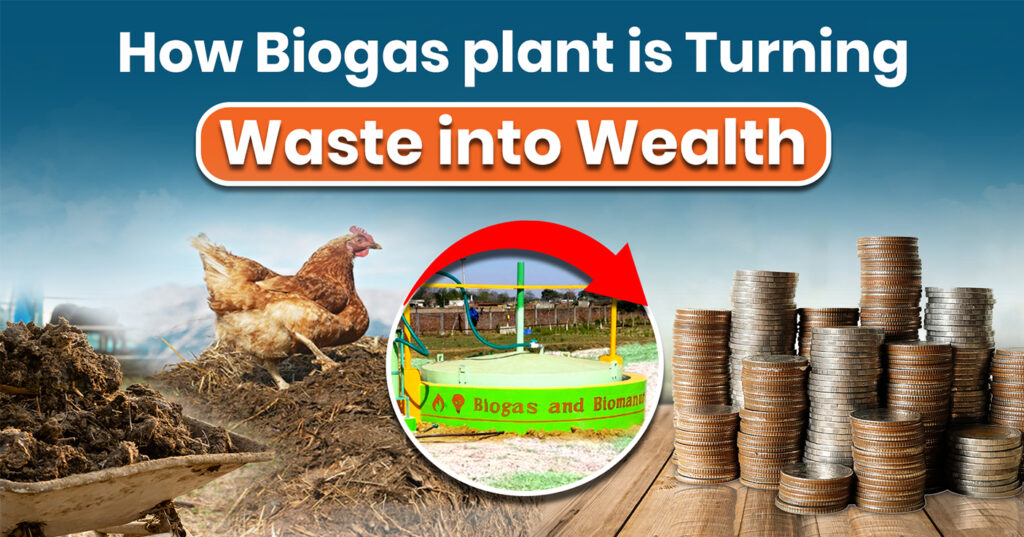We, the present generation, have the responsibility to act as a trustee of the rich natural wealth for future generations. The issue is not merely about climate change; it is about climate justice,” said the current prime minister of India, Shri. Narendra Modi explains his concern about climate change and asks us to serve justice to the climate.
The current scenario of climate change is a result of years of greenhouse gas emissions into the atmosphere. We as a society are collaboratively responsible for it, and we need to work together to reduce carbon footprint for farmers.
Keeping this in mind, the United Nations has set global goals for achieving net-zero by 2050. To achieve this goal, all sectors need to cut down their emissions and adopt more sustainable and environment-friendly practices.
One such sector, which does not seem to be a big problem but is actually a major contributor to these emissions, is the Agricultural Sector. The global agricultural-food system is estimated to contribute a hefty 31% of all global greenhouse gas emissions caused by humans. In India, the farm sector accounts for 19.6 per cent of the country’s total greenhouse gas emissions.
What Is Carbon Footprint?
A carbon footprint is the total amount of greenhouse gases released by a person, company, product, or event. These gases, mainly measured as carbon dioxide (CO2), come from several activities such as energy, transportation, production, and supply chains.
For businesses, the carbon footprint includes not only their own activities but also emissions from suppliers, partners, and the entire life of their products. To measure this, companies track emissions in three groups: scope 1 (direct emissions), scope 2 (energy-related emissions), and scope 3 (all other indirect emissions). This helps them see where emissions come from and how to reduce them.
How Does Adopting Sustainable Farming Help to Reduce Carbon Footprint?

The fact that the carbon footprint for farmers is increasing is alarming since global food demand is expected to surge by 56% between 2010 and 2050. Sustainable farming practices can help not only to reduce the carbon footprint for farmers but also to increase crop yield to meet this growing demand. Eco-friendly farming practices help reduce environmental pollution while maintaining high agricultural productivity.
Here Are The 5 Ways to Help Farmers Reduce Their Carbon Footprint
|
5 Ways to help farmer Reduce Carbon Footprint |
||||
| Crop Rotation | Minimizing Tillage | Investing in Renewable Energy and Energy-Efficient Equipment | Adopting Natural Substitutes for Chemical Fertilizers | Using Energy-Efficient Equipment |
1. Crop Rotation to Reduce Carbon Footprint
Monoculture farming depletes soil nutrients and increases dependence on chemical fertilizers, raising the carbon footprint for farmers. Crop rotation maintains soil health and enhances soil structure, naturally reducing the carbon footprint for farmers. Understanding the relationship between Agriculture and climate change is important for creating sustainable farming strategies.
2. Minimizing Tillage to Reduce Carbon Footprint
Traditional tillage methods involve plowing the soil, which can be required sometimes to increase the productivity of the soil, but the machinery used and the energy consumed to perform tillage run of fossil fuels. Sustainable farming practices help farmers reduce environmental impact while maintaining high crop yields.
Also, tillage releases carbon stored in the soil into the atmosphere. Conservation tillage practices such as no-till or reduced tillage minimize soil disturbance, preserving soil structure and organic matter. This reduces the carbon footprint and enhances soil carbon sequestration.
3. Investing in Renewable Energy and Energy-Efficient Equipment to Reduce Carbon Footprint
Fuel consumption on farms contributes to nearly 6% of agriculture’s production emissions. Machines that are used in farms for sowing, cultivation, and processing of fields and crops usually operate using electricity or fossil fuels. Adopting Renewable energy can not only positively impact their carbon footprint, but it can also save farmers money.
Technologies like biogas plants help farmers to generate renewable energy on their farms using the waste generated from their farms. This technique gives out a renewable source of energy while providing a solution for farm waste management.
By adopting Sustainable farming, farmers can conserve soil health, water, and biodiversity for future generations.
4. Adopting Natural Substitutes for Chemical Fertilizers to Reduce Carbon Footprint
Utilizing organic fertilizers, compost, and bio-based soil amendments instead of synthetic chemical fertilizers can reduce the carbon footprint of agriculture.
Organic farming practices promote soil health, enhance carbon sequestration, and reduce the carbon footprint associated with the production and application of chemical fertilizers.
Adopting sustainable methods helps reduce the negative impacts of Agriculture and climate change on our ecosystems.
Installing Biogas Plants also gives out a nutrient-rich slurry called digestate as a by-product, which is filled with nutrients such as N, P, and K, which can be used as an organic fertiliser and a soil nutrient booster.
5. Using Energy-Efficient Equipment to Reduce Carbon Footprint
Upgrading to energy-efficient machinery and equipment can help farmers reduce energy consumption and reduce carbon footprint. Investing in modern, fuel-efficient tractors, irrigation systems, and processing equipment can lower operating costs and environmental impact.
Investing in Sustainable farming is not only beneficial for the environment but also cost-effective in the long run.
How Koshish Can Help Reduce Carbon Footprint in Agriculture?
Beyond just changing production practices to promote sustainability, farmers can turn to solutions with sustainability in mind to determine how to reduce their carbon footprint. Introducing new products and solutions can positively impact greenhouse gas emissions, as well as help grow or maintain yields.
Koshish offers biogas plants that not only generate renewable energy but also provide farmers with nutrient-rich slurry for use as organic fertilizer. By managing farm waste effectively and utilizing by-products for beneficial purposes, farmers can further reduce their carbon footprint while promoting resource efficiency and enhancing the overall sustainability of their operations.
Final Thought
Reducing agriculture’s carbon footprint is crucial for mitigating the impacts of climate change and addressing the challenge of food scarcity amidst a growing global population. As one of the leading contributors to greenhouse gas emissions, agriculture requires collaborative efforts from industry stakeholders, advisors, and farmers to effectively tackle its carbon footprint.
To align with the United Nations’ ambitious net-zero emissions target by 2050, it’s important to aim for a significant reduction in global greenhouse gas emissions by 2030, with a target of 45%. This action is vital for limiting global warming to 1.5 degrees Celsius. Agricultural practices must undergo transformative changes at the farm level, alongside fostering innovation throughout the industry.
At Koshish, our dedication to sustainability drives us to continuously innovate and develop solutions aimed at reducing agriculture’s carbon footprint. Through our ongoing efforts, we strive to play a pivotal role in shaping a more sustainable future for agriculture, contributing to global efforts to combat climate change and ensure food security for generations to come.
Frequently Asked Questions (FAQs)
Question: How can farmers reduce carbon footprint?
Answer: Farmers can reduce their carbon footprint by rotating crops to keep soil healthy, using less plowing to protect the soil, and switching to renewable energy like biogas from farm waste.
They can use natural fertilizers instead of chemicals and choose energy-efficient machines. These actions can reduce farmers’ carbon footprint. By implementing Eco-friendly farming practices, farmers can conserve water, protect soil health, and enhance biodiversity.
Question: Does organic farming reduce carbon footprint?
Answer: Yes, organic farming helps reduce the carbon footprint. It avoids synthetic chemicals, uses natural fertilizers like compost, and improves soil health. This helps store more carbon in the soil and lowers greenhouse gas emissions compared to conventional farming.
Question: How to calculate a carbon footprint?
Answer: To calculate a carbon footprint, add up all the pollution things like using electricity, driving, and making products. It’s usually measured in units called CO2 (carbon dioxide). People and businesses use special tools to help calculate these emissions.








